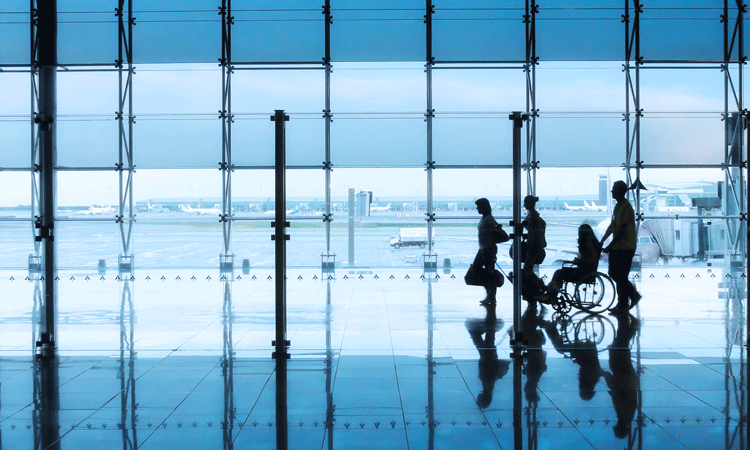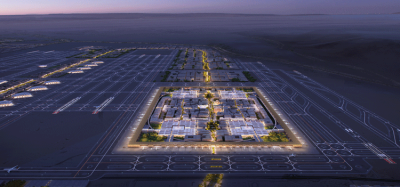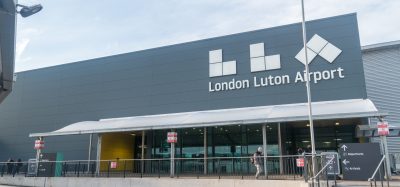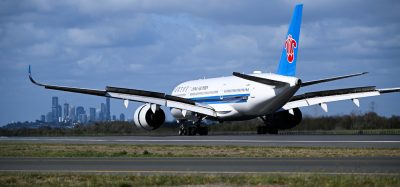Making the travel experience more inclusive: understanding passengers with disabilities and how airports can help
- Like
- Digg
- Del
- Tumblr
- VKontakte
- Buffer
- Love This
- Odnoklassniki
- Meneame
- Blogger
- Amazon
- Yahoo Mail
- Gmail
- AOL
- Newsvine
- HackerNews
- Evernote
- MySpace
- Mail.ru
- Viadeo
- Line
- Comments
- Yummly
- SMS
- Viber
- Telegram
- Subscribe
- Skype
- Facebook Messenger
- Kakao
- LiveJournal
- Yammer
- Edgar
- Fintel
- Mix
- Instapaper
- Copy Link
Posted: 18 November 2024 | Waheedah Lawal Suleiman | No comments yet
Waheedah Lawal Suleiman writes about how airports have the potential to make travel easier and more enjoyable for people with disabilities. By prioritising accessibility, communication, and tailored support, airports can create truly inclusive travel experiences.


Unpicking the barriers: a personal story
Don’t airports feel like magical places? They symbolise adventure, new horizons and the fascination of lift-off. Families like mine, however, work through a seemingly endless puzzle board of logistics and emotional complexities that lie beneath the magic.
Flying with my son was way beyond the usual family holiday. We would both have to think through every possible scenario…Is the airport bathroom accessible? Can the airport employees help him? His wheelchair was not just a simple moving device, it was an important part of his journey, and his comfort and care throughout the journey. Day-to-day, my son had his siblings who carried bags and helped wherever possible, but the absence of resources and awareness within the travelling world was often isolating.
It wasn’t just the logistical issues but as his parent, I was constantly expecting challenges in advance and had a plan in place to prevent that mishap if something went wrong. As much as it drained me to my core, my family had to reorient and make the most of what could have been an easygoing location. Each trip would serve to remind me of the fact that my superhuman child was moving through a world not entirely ready for someone like him.
Each trip would serve to remind me of the fact that my superhuman child was moving through a world not entirely ready for someone like him.
Nevertheless, the grin never left his face, I can recall, every time we would pull up to the airport. He was intrigued despite the obstacles to learn, he loved going up into the sky. Here he would experience new environments and meet different people. As much as I enjoyed those moments, the process was draining for me. Airports are often built with the focus on activity and efficiency and not accessibility. They have the potential to make travel, however, easier, and more enjoyable for people with a disability.
Focusing on the individual
Although my experience is with my child and his cerebral palsy, it is important to remember that every individual affected by disability presents their own challenges.
Airports are often built with the focus on activity and efficiency and not accessibility.
Their needs and support requirements are all significantly different, meaning that airports need to tailor their approach to fit the bill. Another advantage of this is that it prevents us from generalising and continues to remind us how essential individual care for disabled travellers should be.
Better airports: travelling inclusively today
Clearly, airports can make the journeys of parents and carers travelling with disabled passengers much simpler. Below are snippets of advice that an airport can take.
- Unified communication: Families should immediately have access to a single-point contact at the airport when their flight is booked. This person would know the kind of accommodations you needed, including something like a wheelchair, CPAP machine or security assistance. A direct line of support would be a relief to families.
- Priority security lanes and boarding: Airports should have priority security lines for families who are travelling with disabled passengers. Being able to avoid the difficulties of doing routine tasks in a hurry, will enable parents to concentrate on their child. Family members and all support persons travelling with passengers of reduced mobility should also be given priority boarding to allow time for families to settle down without stressing about the crowds.
- Training for airport staff: Customised training to develop empathy and specialised training. This includes training staff in every area where families with disabled individuals will come into contact, from check-in to boarding. Training promotes an environment that is inclusive and supports staff in the care they should give.
- Create accessible airports: Require airports to develop a plan for making all bathrooms, lounges and waiting areas accessible throughout the facility. Far too often, families must look for these services across the country, which only compounds an incredibly stressful process.
- Sensory neutral zones: These calming spaces within busy airports are designed to give relief to children with different requirements. Airports with sensory rooms are processing ways to become more welcoming environments for neurodiverse travellers.
- Inflight comfort – working with airlines: Airlines and airports should collaborate to provide better in-cabin services for people with disabilities. A long sitting period may be tiresome without some support. This may increase the level of positive experience for travellers, such as my son, by providing wheelchairs and reinforced seats on board.
Call to action: accessible travel
This is a real low point for me, as by wrapping up the article, I think about how important it is that travellers and airport authorities, airlines included can consider how they can be part of making travel more inclusive. An example is to ask readers: “How can airports and airlines work to foster a more inclusive, approachable environment for all travellers?” It highlights the issue and makes people feel they should do something about it, promoting widespread inclusion efforts.
A future of inclusive travel
When I think about all my travels with my son, the memories are warm and wonderful, but the journeys were hard. Travel should not be a battle for families with disabilities at airports and airlines, no one needs to be left out because the world of travel can simply belong to families.
sometimes simply letting people in on the challenges that travellers with disabilities face can be enough to get others thinking about how they treat and view them
Anything that can unburden a small part of the logistics and emotional drain on parents just might make travel easier, even if only slightly, to fathom. It is a place where even the disabled can enjoy their journey to the fullest through its accessible design, efficient communication and extraordinary service.
Implementing these recommendations will help underscore the importance of personalised care, respect in language, and work towards a collective effort to make travel more inclusive for all people.
How can you help?
Creating a more inclusive travel experience for people with disabilities goes a long way to completing the circle. As a traveller, as an industry professional or just as an ally, there are several ways you can join the cause:
Advocate for change
- Educate people: Post stories, articles, and individual experiences of struggles that people with disabilities experience while travelling. Promote discussions about inclusivity in travel on social media platforms or blogs.
- Contact authorities: Airlines, airport authorities, travel agents, in your own way nudge them to enhance their accessibility measures by providing ideas and demonstrating the human dimension of this issue.
- Work with organisations: Partner with disability and travel inclusivity advocacy organisations to influence policies. You can also volunteer, attend events, or even coordinate public campaigns.
Offer feedback
- After travel: Give feedback if you had accessibility difficulties travelling to the airline, the airport, or directly to companies. Highlight shortcomings and recommend how to enhance the experience for people with disabilities.
- Praise good practices: When an airport or airline does something good towards inclusiveness, talk about it with your friends. Show a model and make them do the same with other companies.
Support family and friends
- Speak on behalf of family and friends: Work to ensure that family members or friends who have disabilities are properly taken care of during travel. Be sure to research in advance, match with the service providers and if needed advocate for them.
- Teach others: Share the knowledge of inclusive travel – spread the word to those we know and care about. And sometimes simply letting people in on the challenges that travellers with disabilities face can be enough to get others thinking about how they treat and view them.
Volunteer or donate
- Be a volunteer: Volunteer for organisations that help those with a disability travel. Your help could range from helping them plan trips, picking them up, or doing meet and greets at the airport.
- Contribute: Help fund non-profit organisations that are (hopefully) trying to make travel easier for those of us who use wheels instead of hooves. Various NGOs work in the sector of catering equipment, resources or advocacy to ease these travelling experiences for disabled people.
Encourage training and policies that are inclusive
- Promote training: Push for better staff training at airports and on aircraft so workers know how to help passengers with disabilities. Put pressure on travel companies to fund ongoing learning around access.
- Advocate for inclusive policies: Call for airports and airlines to adopt policies that make it clear equity is a priority and ensure various services are available – sensory rooms, minimise the hassle of security checks, provide disabled-friendly toilets and help points for travellers with disabilities.
Be an empathetic traveller
- Help: If you see someone trying to carry something, help. Whether that means holding an arm out for someone who is in a wheelchair or simply being patient in security lines. Be kind.
- Require inclusivity in your travel: Use airlines and airports that are disability friendly. As a consumer, you have the power to influence the betterment of practices within the airport.


Related topics
Accessibility, Passenger experience and seamless travel, Passengers with reduced mobility (PRMs), Workforce


















